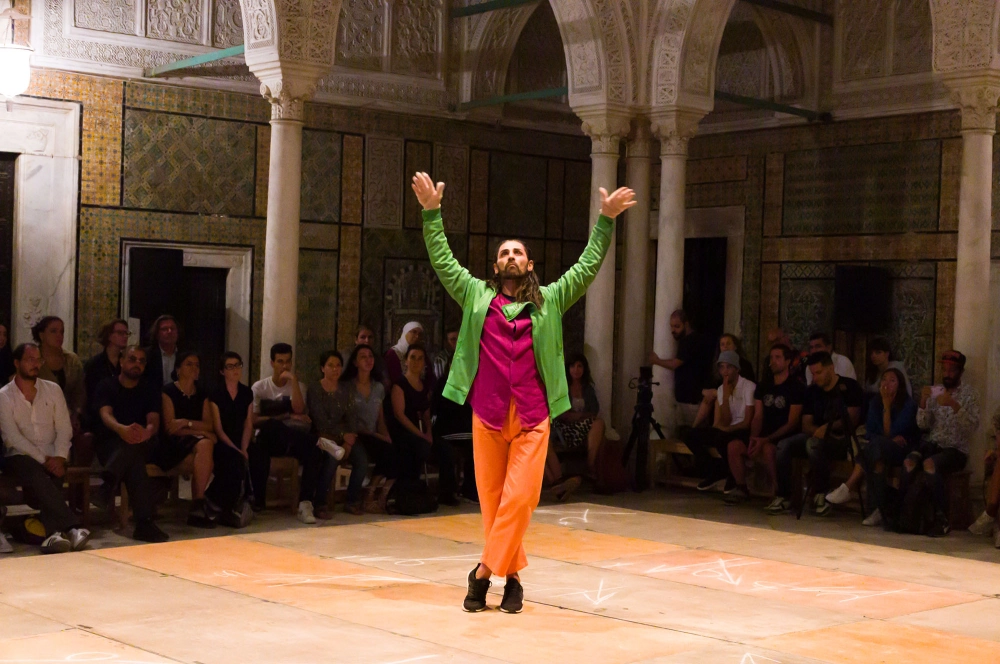Although the word festival was invented in Europe in 1829, in the North of France to be precise, it really made its appearance in 1939 in Orange in the South of France to celebrate theater and music. The Festival d’Avignon, created in 1947 and world-famous ever since, remains the best example of its origins. Almost a century later, it would be difficult to count the number of festivals that exist around the world, so prolific are they in all cultural fields. In France alone, there are already over fifteen hundred.
On the contrary, art and art festivals are deeply rooted in local culture and date back to ancient Africa, when costumes, body painting and dance performances were the highlight. Nowadays, art festivals are not just cultural events, but have become a veritable social fact, serving as a platform for African artists to showcase their creations of all kinds and develop their visibility. Not to be confused with art fairs and galleries, which do a complementary job of developing a market and commercially promoting the work of artists from the continent to amateurs and collectors.
The creative, multi-disciplinary rendezvous organized here and there on the African continent over the last few decades have thus become increasingly popular. And in Europe, where the visual arts are concerned, the Venice Biennale is proof of this, with renewed international attention paid to African arts, and in particular to those presented in the twelve pavilions in the colors of Africa, which opened on April 20 and will close its doors on November 24.
This time, however, we’d like to take a closer look at the festivals of African art and contemporary expression (visual and performing arts) that exist exclusively on African soil, and which are dedicated to showcasing the work of local artists and international artists working on the continent or in exchange with the continent. From North to South and East to West Africa, let’s discover six of the continent’s most notable festivals:
In North Africa / Maghreb:
1) Dream City in Tunis (Tunisia) held its 9th edition from September 22 to October 8, 2023 and will return from October 3 to 12, 2025.
Dream City is a cultural and artistic event whose aim is to transform urban spaces into living art scenes, promoting contemporary creation through art installations, performances, concerts and exhibitions. Created in Tunis in 2007, the festival invites local and international artists to intervene in the public space, encouraging interaction between the works and the city’s architectural heritage, and aims to promote cultural diversity and engage the Tunisian community in reflections on urban and social issues.
Every two years, Dream City takes up residence in the historic heart of the Tunisian capital, taking over the informal spaces of the Medina (cafés, streets, palaces, squares and abandoned buildings) to the delight of local residents and the public at large, who let themselves be taken away to discover unexpected worlds.
The festival’s programming, built up on average two years in advance of the event, is made up of works produced over a long period of time (between one and four years) by Tunisian and international artists who are inspired by today’s world, its issues and its challenges, and who are invited to express themselves contextually and to engage with the city of Tunis and Tunisians to fully grasp the specificities and social and political realities of the city in a fragile global context.
Themes such as human migration, democracy and citizenship, living together, human rights, governance, environmental crimes and memory are at the heart of this unique and committed festival.
Safouane and Selma Ouissi, brother and sister, dancers, choreographers, curators and co-founders of Dream City and the association “l’Art Rue”, offer us every two years an unmissable event that brings a vibrant and inspiring energy to the Tunisian capital. “From the outset, our mission has been to want to return public space to the population, as the state had confiscated it in order to put pressure on civil society to turn it into a “showcase space”. So, in response to the censorship, we came up with an urban choreography and a device to make a march possible for artists and citizens alike”, explains Safouane Ouissi.
2) Jaou Tunis in Tunis (Tunisia) held its 7th edition from October 9 to November 9, and will return in two years’ time.
Until a few days ago, the Tunisian capital was vibrating to the rhythm of Jaou Tunis: the biennial of contemporary arts, with an African flavour and a universal vocation, organized by the Kamel Lazaar Foundation and its artistic HQ, B7L9, which can be spotted from afar in the working-class district where it is located and lined with black and white stripes in the style of Daniel Buren. Since 2013, the Biennale Jaou Tunis has established itself as another artistic beacon of the global South, weaving bridges between local and international contemporary creators, offering critical reflection on universal issues, while celebrating the richness offered to the world by cultural hybridity, enabling intercultural dialogue and a platform for discussion on contemporary social and cultural issues.
For its seventh edition, the festival took up the theme of “Arts, resistance and the reconstruction of futures”, welcoming 9 exhibitions, 9 performances and 9 debates from October 9 to November 9, with over 60 artists expressing themselves in fields as varied as theater, dance, poetry, visual arts and performance. If “Jaou” means party in Tunisian Arabic, the choice of the number 9 is loaded with multiple symbols. What a program! It’s worth noting that Jaou appeared after Dream City, and fortunately the two festivals alternate from one year to the next, otherwise local audiences would find it hard to keep up.
In West Africa :
3) Dak’Art 2024 in Dakar (Senegal) has just kicked off its 15th edition from November 7 to December 7, 2024, initially scheduled from May 16 to June 16, then delayed six months ago due to Senegal’s political and financial situation.
The Dak’Art festival or Biennale of Contemporary African Art is a major event held in Dakar since 1989, originally alternating art and literature. The festival aims to promote contemporary African art and create a dialogue between African artists and those from the rest of the world. It presents a wide range of works, from painting to sculpture, photography to multimedia installations. Each edition of the festival offers a rich and dynamic platform for emerging and established artists, with exhibitions, conferences, performances, workshops and vernissages scattered across a multitude of venues throughout the Senegalese capital, not only celebrating African artistic creativity but also drawing attention to social, political and cultural issues through art.
For this fifteenth edition, the festival is for the first time under the artistic direction of a woman, Salimata Diop, Franco-Senegalese, who has brought together 58 artists from Africa and its diaspora around the theme “The Wake – L’éveil, le sillage, xàll wi”. The aim of this edition is to highlight the challenges facing African artists, such as issues of social justice, the environment and cultural identity, and to explore key contemporary themes such as femininity, violence and consumerism through innovative works.
With an expected attendance of 400,000 visitors, over 450 In and Off exhibitions spread across the city of Dakar, and a budget of 1 billion 800 million CFA francs mobilized by the state, the Dakar Biennale – one of the biggest events in the world of contemporary African art – is “a matter for the state of Senegal, and it will remain so, for it is the state that will have to decide whether to maintain it or not. And it is also the state that can define the modalities and content of the event,” explained Khady Diène Gaye, Senegal’s Minister of Culture.
Over the past 30 years, Dak’Art has become a formidable showcase for the continent’s artists and a must-attend event for creators, art lovers, collectors and professionals from all over the world, playing a crucial role in promoting African creation on the global art scene and transforming the Senegalese capital every two years into an artistic hub unrivalled on the continent, whose interest continues to grow.
4) Les Rencontres de Bamako in Bamako (Mali) has just kicked off its 14th edition, which runs from November 16 to January 31, 2025.
Founded in 1994, Les Rencontres de Bamako, Biennale Africaine de la Photographie, also known as “Rencontres Africaines de la Photographie,” the first and foremost international event dedicated to African photography and video on the continent, has become over its 30 years of existence and 14 editions a key event on the global contemporary art circuit, and this year is entitled “Kuma, la parole, the word”.
A platform for discovery, exchange and visibility of the diversity of photographic practices, for screenings, conferences and workshops, the Biennial is a major and essential venue for the revelation of African, diaspora and international photographers, offering every two years a time for exchange and sharing with the Malian public and professionals from all over the world, and a space for reflection on social, political and cultural issues through the image.
From Malick Sidibé to Seydou Keita, from Samuel Fosso to the new generations, Bamako is the city of all photographers, a place where their dreams come to life for those lucky enough to come and take part. The festival has become a must-attend event for photography enthusiasts, and represents a unique opportunity to discover emerging talent on the African photography scene, while celebrating visual art as a means of expression and dialogue.
In Central Africa :
5) The Lubumbashi Biennial in Lubumbashi (Democratic Republic of Congo) celebrates its 8th edition, which runs from November 1 to November 30.
Held every two years, the Lubumbashi Biennial celebrates the visual arts, encourages cultural exchange between artists and explores contemporary creation on the art scene in the Democratic Republic of Congo and around the world. Today, it is one of the most dynamic and experimental artistic events on the African continent.
Already in 2022 and as for the current edition, the biennial’s theme is perpetual resilience, constant creativity and the quest for identity, and it has invited 23 artists to interrogate toxicity as a condition of existence that inextricably affects social worlds under the title “ToxiCité” or “ToxiCity”. As a starting point, the theme will open up the collective elaboration of a critical and transformative look at the social and cultural environment, in Lubumbashi and around the world. Comprising two concepts, “toxic” and “city”, the Lubumbashi Biennial questions the link between contemporary life in the post-colonial urban setting of Lubumbashi, and more broadly in the global South, and the impact of a number of industrial, economic, ecological, social and cultural processes that have historically contributed, for better or for worse, to the shape and dynamics of urban life in this and other parts of the world today.
The theme of toxicity thus offers a starting point for a critical elaboration and awareness of oneself and one’s natural, social and cultural environment, as a product of ongoing historical processes, which has deposited in you an infinite number of traces, without leaving an inventory. By focusing on the theme of toxicity, this edition’s curatorial committee strives to open up a critical space of artistic engagement and reflection to begin exploring the possible forms this “inventory of traces” might take, in the hope that such a compilation might also tell us more about possible futures to consider from here on in.
perpetual resilience, constant creativity and the quest for identity
In East Africa:
6) The Maputo Fast Forward Festival in Maputo (Mozambique), which ran from October 18 to 26, had to be cut short due to political tensions in the country following the outcome of the recent presidential elections.
The Maputo Fast Forward Festival is a cultural event held in Maputo, the capital of Mozambique. The festival showcases contemporary artistic creation and serves as a platform for local and international artists, particularly those from the fields of music, film, dance and visual arts. The aim of the festival is to promote Mozambican culture while fostering artistic and cultural exchanges with participants from other countries. In addition to performances and screenings, the festival often features workshops, discussions and interactive activities, enabling participants to engage directly with the artists and explore various aspects of creativity.
Maputo Fast Forward is much appreciated for its dynamic and festive atmosphere, attracting locals and visitors alike. It’s an event that’s seen as a beacon of creative resilience, a space where plural voices come together to imagine the future and chart paths towards just and inclusive societies, helping to energize Maputo’s cultural scene and shine a spotlight on artistic talent from the Eastern and Southern African region.
This latest edition welcomed over 50 speakers and artists from 20 countries, 7 exhibitions, an international conference with 5 thematic panels, 2 shows/performances, 13 knowledge circles and a bazaar of innovative initiatives. But in the face of growing political and social tensions, this year’s festival was forced to bring the current edition to a hasty close, but with the unshakeable conviction that art, dialogue and culture are fundamental democratic forces. The Maputo Fast Forward Festival expresses its solidarity with all the people of Mozambique, in defense of their right to peace, democracy, freedom of expression and security.
Text by Christine Cibert.



